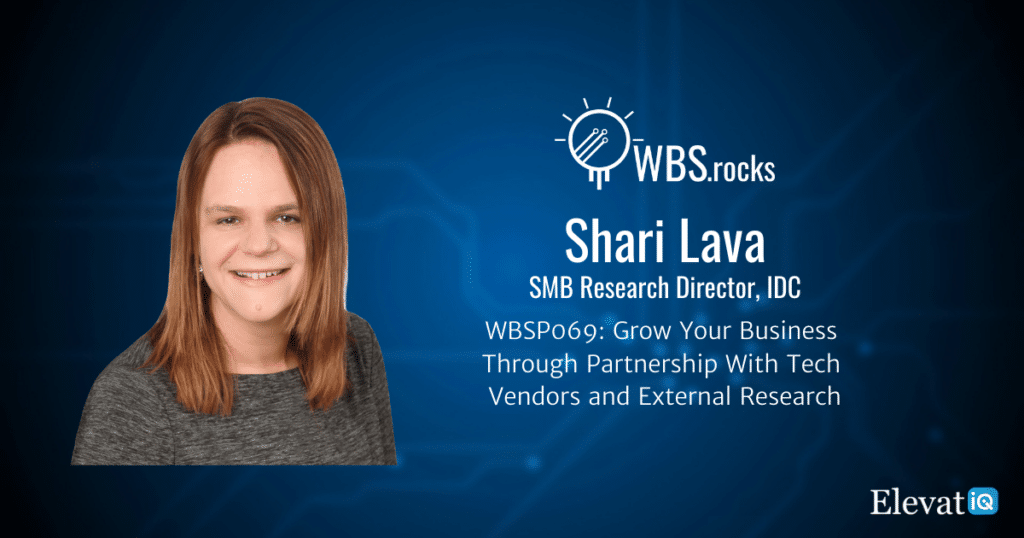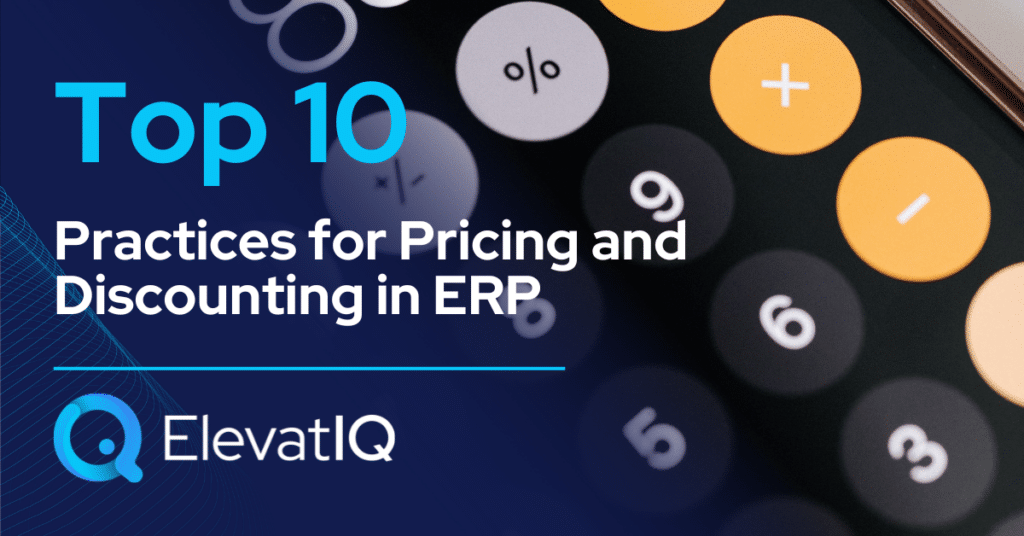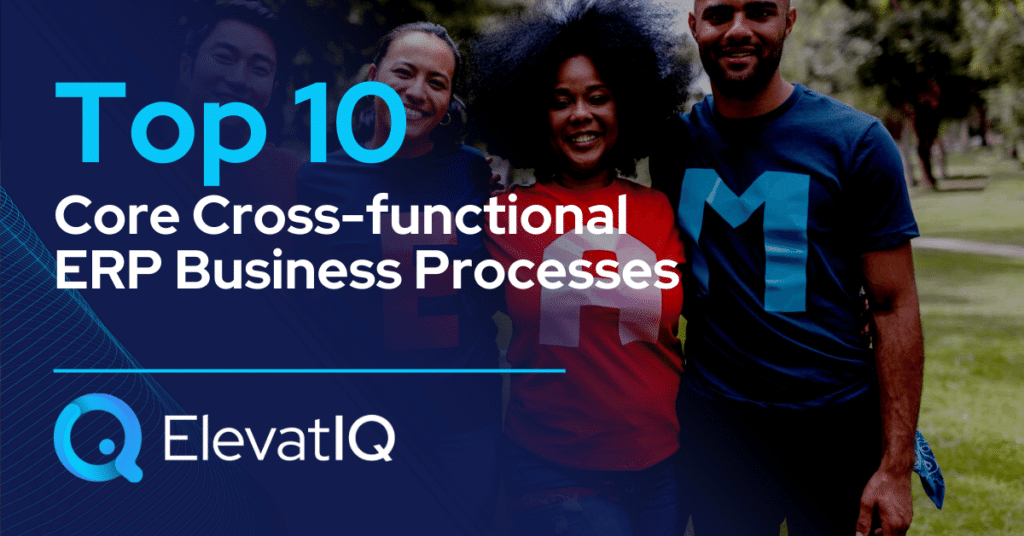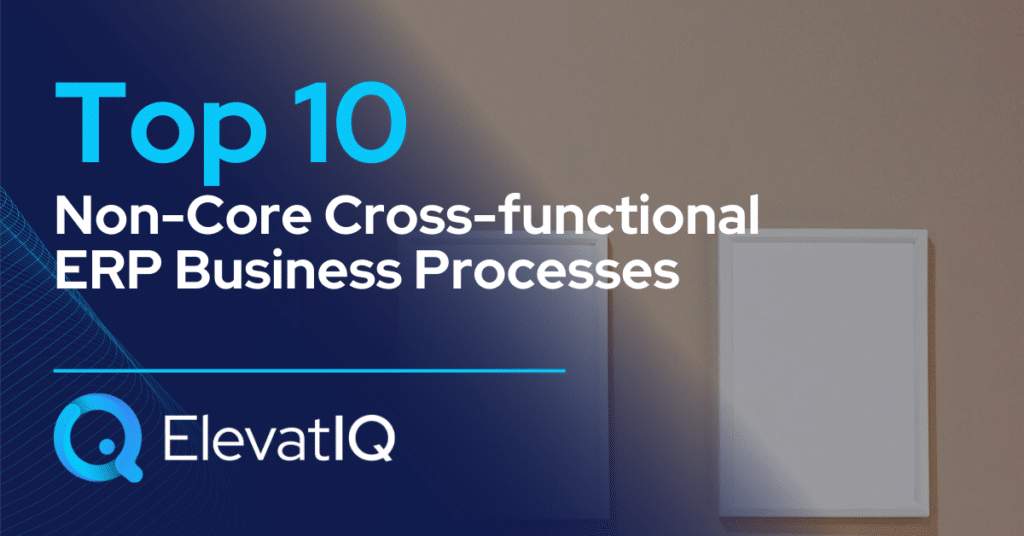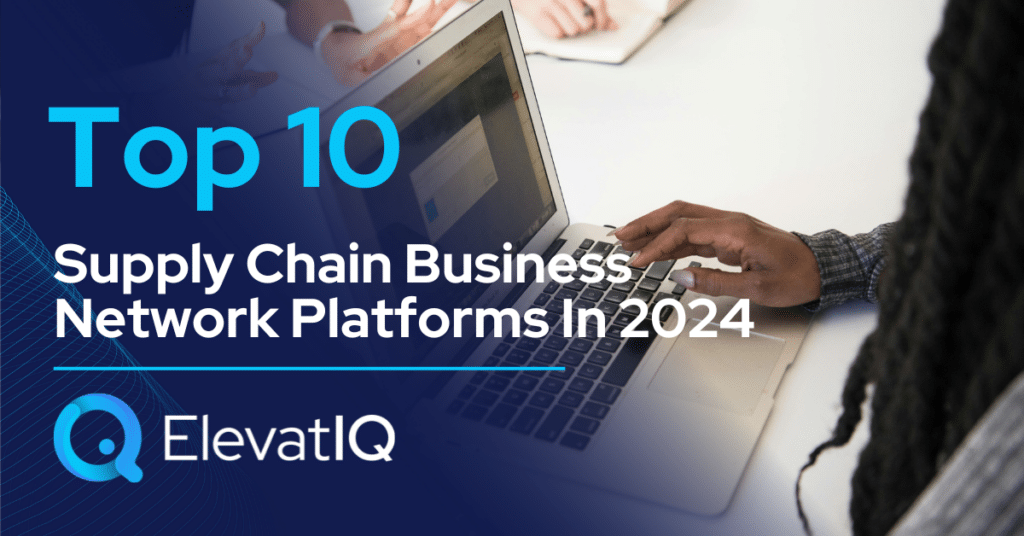In this episode, we have our guest Shari Lava, who discusses the importance of partnership with your tech vendors and external research. She also talks about various trends that executives should know and how they have changed because of COVID. Finally, she touches on how to read research reports and why it is essential to have an organized methodology to lead large transformation initiatives, and how their digital transformation framework can help.
Chapter Markers
- [0:16] Intro
- [2:47] Personal journey and current focus
- [4:25] Perspective on Growth
- [6:02] The challenges for SMBs in implementing digital transformation framework
- [8:27] Utilizing external research for business decision making
- [14:13] The importance of tech vendor partnerships to create a digital transformation framework
- [20:57] Research-based decision-making to select technologies for digital transformation framework
- [26:16] How IDC digital transformation framework can help
- [29:28] Closing thoughts
- [31:49] Outro
Key Takeaways
- Tech priorities for the last couple of years have been very hardware and infrastructure-focused, when now all of a sudden we need to implement applications, we need to implement video collaboration, we need to roll out new notebooks, and we might not have a corporate image for that.
- If you look at some of these applications, they changed a lot in the last five years. ERP implementations look nothing like they did 10-15 years ago, but there’s still this idea that they’re all big and complex, and they take a year to implement it.
- If they don’t have a lot of technology, expertise in-house, and they’re not going to places to get knowledge about technology, they’re going to end up getting disrupted because more and more manufacturing executives are finally saying I want technology besides Excel, to run my business.
- They are missing the opportunity to really learn self-educate, to some degree, understand how technology can solve some of their biggest pain points today. And a lot of it has to do with decision-making and access to data and missing opportunities to steal a competitive advantage.
- If you’re trying to keep your digital customer journey moving and you’re not focused on implementing useful tech, then you don’t have a digitized customer journey. You have a makeshift journey.
- When we look at their business priorities, we see that there’s much more focus than ever on productivity and agility. And when we break down their tech priorities, we see that they’re focusing on putting more data into applications and getting it out of spreadsheets.

Subscribe and Review
Apple | Spotify | Stitcher | Google Podcasts | Deezer | Player FM | Castbox
About Shari
Shari Lava is a Research Director, leading the WW Small Medium Business (SMB) Research Program at IDC. Ms. Lava’s core research coverage includes identifying and supporting the unique, evolving technology needs of the SMB Buyer. For much of her 23-year career, Ms. Lava has worked on all sides of the SMB ecosystem including implementing business applications for SMBs, writing best practice research for tech buyers, and most recently being an operational leader in an SMB prior to coming to IDC.
Resources
Full Transcript
Shari Lava 0:00
When you’re looking to make a decision, how do you research it? Because we know that the stats have been kicking around for years that more and more companies do a lot more research before they ever reach out to a potential vendor. Right? In fact, they’re pretty far through the decision-making process, and you’re probably already on a shortlist.
Intro 0:16
Growing a business requires a holistic approach that extends beyond sales and marketing. This approach needs alignment among people, processes, and technologies. So if you’re a business owner, operations, or finance leader looking to learn growth strategies from your peers and competitors, you’re tuned into the right podcast. Welcome to the WBS podcast, where scalable growth using business systems is our number one priority. Now, here is your host, Sam Gupta.
Sam Gupta 0:52
Hey everyone, welcome back to another episode of The WBS podcast. I’m Sam Gupta, your host, and principal consultant at the digital transformation consulting firm, ElevatIQ.
While other industries such as banking or logistics have successfully differentiated purely because of technology and digital transformation framework, manufacturers treated digital technologies as their stepchild, especially in the SMB space. SMB manufacturers and distributors rarely use external research to augment their business or digital transformation initiatives. What could manufacturers do to learn from other industries and create a compelling customer experience using technology?
In today’s episode, we have our guest, Shari lava, who discusses the importance of partnership with your tech vendors and external research. She also talks about various trends that executives should know and how they have changed because of COVID. Finally, she touches on how to read research reports and why it is essential to have an organized methodology to lead large transformation initiatives, and how their digital transformation framework can help. Let me introduce Shari to you.
Sam Gupta 2:05
Shari Lava is a research director leading the worldwide small Medium Business Research Program at IDC. Miss Lava’s core research coverage includes identifying and supporting the unique evolving needs of the SMB buyer for much of offer 23-year career. Miss Lava has worked on all sides of the SMB ecosystem, including implementing business applications for SMBs, writing best practice research for tech buyers, and most recently, being an operational leader in an SMB prior to coming to IDC. With that, let’s get to the conversation. Hey, Shari, welcome to the show.
Shari Lava 2:44
Thanks for having me, Sam. It’s our pleasure,
Sam Gupta 2:47
I’m super excited to discuss a lot of things from the research perspective. Before we do that, just to kick things off, do you want to start with your personal story and current focus so that our listeners know who you are?
Shari Lava 2:59
Yeah, for sure. So I’ve spent the majority of my career focused on small and medium businesses and really all parts of the small and medium business ecosystem. And got my career. I started by building contact management applications, as we called them back in 1998. for small businesses, I worked for small businesses implementing these kinds of solutions.
So now what I do is I’ve taken all of that experience in implementing digital transformation framework and being a small business leader, and now what I do is I actually look at small and medium businesses, look at what their technology adoption looks like. And then look at the types of offers that vendors or like Microsoft, or SAP, or all those sorts of folks are offering to these small and medium businesses and help them understand how they fit or don’t fit with certain types of clients.
And I love this work. It’s really interesting because I’m passionate about technology, I was on my first computer at five years old, and it was in a school in a corner that nobody touched. And I think traditionally, small and medium businesses haven’t understood what technology could do for them. And then the pandemic came, and now they certainly see it.
But the difference is they’re trying to climb a really steep curve. And so what I try and do is kind of help them jump that curve a little bit, both with my research and also in my advocacy of their interests with big tech vendors.
Sam Gupta 4:25
Okay, amazing, so I definitely want to dig deeper into each of those things, especially from the research perspective, because you guys bring a lot of insight, the combined insight of the community what you are hearing from these manufacturers about digital transformation framework or the tech vendors when you are talking to them.
So we get a very consistent theme in terms of the research. But before we do that, we have one of the standard questions for every single guest that comes on the show, and that is going to be sharing your perspective on growth when you think of growth. What does that mean to you?
Shari Lava 4:53
Yeah, I think right now what I would say, Sam, what I thought of growth a year ago and what I thought of growth now, very, very different. And especially for the SMB market, and especially the small businesses, growth can be pretty elusive right now if you don’t happen to find yourself in one of a handful of industries that have done very well during the pandemic, and so growth right now I think is focused still for a lot of SMBs on kind of pivoting the business, and I know a lot of us to think it’s been a year what do you mean pivoting? Haven’t they already pivoted?
In some respects, they have, But as things are really fluid right now. And it’s more about levels of pivoting if you will. And so, finding growth is about constantly evaluating where the business is at what is in demand this week, so to speak, right? I say that almost kidding. Then moving your business as agilely. I know that term gets thrown around a lot. But it is possible to maximize whatever growth you can pull out right now.
Tech priorities for the last couple of years have been very hardware and infrastructure-focused, when now all of a sudden we need to implement applications, we need to implement video collaboration, we need to roll out new notebooks, and we might not have a corporate image for that.
Shari Lava, Research Director, IDC
The challenges for SMBs in implementing digital transformation framework
Sam Gupta 6:02
Okay, anything. So let’s go back to your comments about SMB is not understanding the tech adoption or not utilizing the technology to their advantage or implementing a digital transformation framework. So what are some of the challenges that you hear in the marketplace with your research?
Shari Lava 6:19
Yeah, for sure. So if we’re going to talk about the technologies and the barriers, we have to start with what their technology priorities were, not that I want to spend too much time in history. But traditionally, when you talk to an SMB about what their top tech goals were, for the next six to 12 months, they would typically tell you things that were very hardware or traditional infrastructure focus, they said, Oh, well, we want to replace our backup, we need a couple of new servers, we need to strengthen security in the network, or we’re doing PC renewal.
All of these things for both small and medium businesses were always their top five tech priorities, and then the pandemic came. And a lot of those things, not all of them, but most of them get disrupted, suddenly, I care a lot less about network security and care more about securing all the desktops, I suddenly had to go out and buy and the data that’s on them, that’s no longer sitting behind my corporate firewall, oh, when these ways we’ve been managing the business by spreadsheet, these don’t work anymore, right.
Shari Lava 7:19
And so the types of technologies that we’ve seen businesses suddenly focus on, for the first time ever, they said, hey, I’ve got to get my data at a spreadsheet, I’ve got to get them into customer applications and financials applications and for manufacturers ERP application, and that’s at a much smaller company size than I think we would have seen traditionally in the past because they’ve had to digitize their entire customer journey and create digital transformation framework.
Now the problem, of course, is that if your tech priorities for the last couple of years have been very hardware and infrastructure-focused, you probably whatever resources you have, and let’s be honest, many don’t have a lot, they probably have the wrong skills, because they probably have hardware and server and backup and all those kinds of skills, when now all of a sudden we need to implement applications, we need to implement video collaboration, we need to roll out new notebooks, and we might not have a corporate image for that if we even had a corporate image, to begin with.
So very different challenges in implementing digital transformation framework and not the right expertise, in-house, not to mention they still have to keep all those other things running. And so really stretched for resources even more so than they typically were.
Utilizing external research for business decision making
Sam Gupta 8:27
I could not agree more with respect to expertise, the manufacturers that we commonly come across or see, especially in the SMB market, and we are talking about super small manufacturers, right, typically don’t have any IT capacity, even if they might have some of those digital systems and capacity to create digital transformation framework.
So their adoption or utilization of these systems is fairly low. Let’s talk about some of the things from the external research perspective. I don’t know what your perspective is in terms of utilizing external research. And this is the question that I asked every single guest that I get from the research perspective, the people who are involved from the macro perspective, and from my marketing background.
Shari, when I look at the external research, let’s say find the product marketer. As much as I want to rely on the internal data and the intuition to be able to decide okay, which product should I be selling? At what price what kind of product margin should I have? That I’m not losing to my competitors, right. This is where external research plays a very important role whether you are looking at the external perspective or the internal perspective in terms of deciding whether you want to buy the expensive machine or you want to buy an expensive ERP system.
External research could play a very important role. So what is your experience with SMB manufacturers and distributors? Are they used to utilizing external research to supplement their processes or decision-making?
Shari Lava 9:52
Yeah, I think it’s rising. I think it has been rising for a while, and I think it’s getting to the point where for most manufacturers, it’s something That they utilize more and more when making a decision. one of the things we ask in our research is when you’re looking to make a decision, how do you research it because we know that the stats have been kicking around for years that more and more companies do a lot more research before they ever reach out to a potential vendor.
In fact, they’re pretty far through the decision-making process, and you’re probably already on a shortlist. And so they’re using things like industry publications, and they’re using things like external research bodies, such as IDC. But the other thing, too, is that there are some groups that are not leveraging it enough.
Shari Lava 10:36
And they’re still relying on things like word of mouth, and especially the small businesses tend to rely a lot more on word of mouth. And that might be not necessarily your friend or your neighbor, or though that’s true for some tech. But when it comes to systems, it tends to be a more professional word of mouth.
And that can mean a lot of things that can be a trusted adviser, that could be industry, peers, competitors, people who came from other companies that join your company, all of those sorts of things feed into it. And while that’s great, the issue with that is, if you look at some of these applications that really provide the most bang for the buck today, they changed a lot in the last five years.
ERP implementations look nothing like they did 10-15 years ago, but there’s still this idea that they’re all big and complex, and they take a year to implement it, and all of those sorts of things, and that I think, really holds a lot of companies back, whereas if they were utilizing more of the research bodies that are out there to understand how those experiences have modernized quite a bit, I think that they would understand a lot quicker what the value is, and that the time to value is actually much, much faster than it used to be, and that these implementations don’t fail the way they used to, some of it could due to the maturity of digital transformation framework.
Sam Gupta 11:51
Okay, amazing. So let me qualify my statement a bit more here in terms of utilizing the external research. So when we look at the manufacturers, they are typically utilizing a lot of external research for their own product development. And I’m probably going to be called out for my comment.
The next comment that I’m going to make on this row is typically manufacturers and distributors the way they utilize technology or IP, it’s almost like a stepchild for a majority of the SME manufacturers compare this with, let’s say, for example, if you’re comparing this with banking, or insurance companies, I mean, they live on technology, and they really put their commitment on technology because they know that technology is probably going to be their competitive advantage if we can enable the customer experience using technology.
But manufacturers typically don’t do that. They are hanging out in the, let’s say, manufacturing community, they are listening to their manufacturing influencers, but they very rarely hang out in, let’s say technology forums. It could be gotten to be ADP. It could be any of these symposiums. So what would be your recommendation to a manufacturing executive? Who is not hanging out in these forums, and what are they missing out on?
Shari Lava 12:59
Yeah. So I mean, I think that there, we talked about earlier how low they are in terms of internal tech resources. And my research certainly shows that the sooner in their lifecycle that they have a tech resource, the more technology they start adopting. So if they don’t have a lot of technology, expertise in house, and they’re not going to places to get knowledge about technology, they’re going to end up getting disrupted because more and more manufacturing executives are finally saying I want technology besides Excel, to run my business.
And I would say that without some sort of knowledge in-house to kind of bring that up a level, they need to go and educate themselves. And it’s actually more important than it’s probably ever been and will be long after COVID is a distant memory, which can’t come soon enough. Yeah, so I think they’re missing the opportunity to go back to your question I think they are missing the opportunity to really learn self-educate, to some degree, understand how technology can solve some of their biggest pain points today. And a lot of it has to do with decision-making and access to data and missing opportunities to steal a competitive advantage.
If they don’t have a lot of technology, expertise in-house, and they’re not going to places to get knowledge about technology, they’re going to end up getting disrupted because more and more manufacturing executives are finally saying I want technology besides Excel, to run my business.
Shari Lava, Research Director, IDC
The importance of tech vendor partnerships to create a digital transformation framework
Sam Gupta 14:13
Now let’s talk about some of the tech vendor partnership issues. Right? So let’s say if you consider an example of a manufacturer or distributor, I mean they are going to be working with a lot of different suppliers. And typically, there, let’s say the product suppliers when we talk about material suppliers, are going to be slightly more critical.
In fact, the equipment suppliers are going to be equally critical as well, because if they don’t think the nightly, then their production floor is going to be stopped or the material if they don’t have material on time, they don’t have those relationships with the material vendors. Sometimes that could be an issue as well, but they don’t have the same relationship with tech vendors, but in my mind and in my opinion, your ERP is sort of the glue to run your organization, whatever digital transformation framework or infrastructure that you have.
Even if you are processing, let’s say, the transaction or orders, everything that you are doing on the systems, even if that is stopped, your business is going to be stopped. So, in my opinion, I think that vendors should be treated more as the strategic partner as opposed to having this transactional mindset. So what would be your perspective on that in treating the tech vendor as the partner?
Shari Lava 15:22
Yeah. So I think that traditionally, we talked to already about how the fact that SMBs hadn’t valued it in the same way in the past. And there was a quote from the head of Cisco That said that since the pandemic, the CIO has gone from living in the basement to living in the C suite. And that’s great internally. But as we talked about, not all of these SMB manufacturers really have any tech people.
And so partners become your extension of your tech team, however big or small it happens to be. And if the tech has suddenly gone from being something you cut in an economic downturn to something you rely on to keep your business resilient than you did, I would totally agree with you, Sam, that you need really strong partnerships just like you do for all the other parts of your business as a way to keep that digitized customer journey moving.
Shari Lava 16:15
So if you’re trying to keep your digital customer journey moving and you’re not focused on implementing useful tech, then you don’t have a digitized customer journey or digital transformation framework, right? You have a makeshift journey. And when it comes to what’s important, though, which I think is the other part of your question for the small businesses, they are looking for partners that get them that understand their challenges that speak their language, one of the biggest misses I often see is partners will throw out a lot of buzzwords.
And so they think that they don’t get them and they may not, or the other thing that happens when they use a lot of buzzwords, and such is the small and medium businesses just kind of feel you almost make them feel like they’re not smart.
Yeah. And therefore, you’re creating a psychological resistance, if you will, to work with that partner. You’re already you wouldn’t do that to someone you want to have a good relationship with. So why are you doing it to your SMB customer?
Sam Gupta 17:19
Exactly. Yeah, it comes across as very condescending. And I have seen that personally as well. And that’s why I try to stay away from all of these buzzwords. Let’s talk about a solution. So let’s talk about the digital outlook. Okay, so when I have the research folks on my show, I am always asking them to predict the technologies as we have agreed Shari here that we are going to be slightly more resistant towards using the buzzword?
They are going to be talking about. Oh, yeah, it’s going to be the next big thing. a Digital twin is going to be the next big thing. So if we discussed this from the business perspective, what are some of the trends that you are expecting from the business perspective that my CFO or the CEO needs to know, in terms of knowing how they should be positioning them all in the next five to 10 years?
Shari Lava 18:28
So I think when we look at what their business priorities are, we see that there’s much more focus than ever on productivity and agility. And when we break down their tech priorities, we see, as we talked about, that they’re focusing on putting more data into applications and getting it out of spreadsheets like that’s pretty important.
When you take the buzzwords then like AI, if you agree, if you just say, hey, AI is going to be important, and SMB goes, don’t you understand my life is on fire, right? I don’t, really. But if you talk about why AI is related to those trends, and what AI means to an SMB, and how it can help them now, all of a sudden, we’re having a different conversation and what my research shows because it is one of the questions I asked SMBs I said,
What use cases if any, are you currently using AI for and which ones are you thinking about using it for and then I gave them a list of really practical use cases, things like, hey, I want to automate data capture, I want to get my system to actually provide me some insight that I wouldn’t see in an Excel spreadsheet.
Shari Lava 19:37
I want to have AI automate some things for me that I’m spending too much time doing manually while I’m feeling so much pressure, and my employees are feeling so much pressure because we’re trying to change everything.
And those were really kind of the top things that SMBs picked as things they want AI to do for them. Now. I think what that points to, And there was some additional research I did around this where they said, And the thing is, those are differentiators. For me, if I’m going to spend the money on an apple, a business application to manage my business, then I want it to help me with these things.
It’s not enough anymore to tell me it’s going to centralize my data. It’s going to do all these things. It actually has to enable these things. For me, it has to help me be smarter and run better. And so if you can position if vendors can understand that, that’s actually how SMBs want to think about AI and digital transformation framework, then I think that you can bring the conversation to a level that’s digestible for everyone and help them help SMBs understand that there are benefits including manufacturers, especially manufacturers, who could use things like AI to warn them ahead of time when delivery dates and targets are going to be missed. And how, what kind of impact that’s going to have on the customer orders that are piling up.
They are missing the opportunity to really learn self-educate, to some degree, understand how technology can solve some of their biggest pain points today. And a lot of it has to do with decision-making and access to data and missing opportunities to steal a competitive advantage.
Shari Lava, Research Director, IDC
Research-based decision-making to select technologies for digital transformation framework
Sam Gupta 20:57
Okay, amazing, so we are going to be talking now about research-based decision-making. And typically, when we look at the manufacturers and distributors, they have not made as sophisticated decisions as their enterprise counterparts would have made. They are not really as equipped in making the research businesses. So let’s take an example of a CIO of the enterprise company.
The majority of the time, when they make a decision, they are probably going to be asking for secondary research from corporations like IDC, just because they understand the value the IDC brings to the table, and they are probably going to be looking at different variables.
Now, even if you look at the report from IDC or Gartner or any of the research firms, if you don’t know how to utilize that also can consume that information, how to read that, how to interpret that, how to customize that for your own advantage, if you are not going to get much value out of it right? You need to know how to read these reports and to be able to consume them on your own on one page. So now, my typical SMB manufacturers, I mean, typically don’t rely on these reports.
Sam Gupta 22:01
And the reason for that is because they have this sort of fear that this is probably not going to be relevant for me because I’m probably going to see a lot more buzzwords that I don’t care for. So tell us, number one, the research methodology, all you guys do the research, what is your method to being able to do this research.
And let’s say if SMB manufacturers want to get sophisticated because there is a significant failure rate when it comes to digital transformation framework and the ERP failures as well in the SMB community. And there is a reason for that because they are just not as good at making. So if you were to coach or advise an executive, why they should be consuming the research, how they should be reading the research, and what is your methodology in doing the research? Tell us a little bit about that?
Shari Lava 22:50
Yeah, so when I’ve done these types of comparison reports, either here at IDC, this type of research report, or even the selection work that I used to do when I was actually working in partner organizations that implemented these kinds of solutions. The thing is, is there a lot of the research reports the mistake that a lot of SMBs make is they take a look at the graphic and they look at the top quarter.
Then they say okay, that’s our shortlist. They don’t go any further. And the issue with that is that usually in the depth of those reports, and they’re big reports, but there’s a reason they’re big is that we talk about in these reports, this is right for you. If you only look in the shortlist, what’s on the graphic in the most desirable position, depending on which firm you’re talking about. Right? Then you miss some of the nuances because not every solution is right for everyone. A lot of these solutions are very specific to the industry. Some are specific to size segments. Some are even a better fit, depending on what the rest of the technology is in your ecosystem.
Shari Lava 23:56
So those things you have to really have to look at and you have to understand those things and pay attention to those, and I look at CIO leaders because I’ve been in this role where I’ve been working with a CIO, my role previous to working at IDC, I was actually an operational leader, and in our case, we were talking CRM applications, but I was on the marketing side, and the CIO came to me with a shortlist that was basically the top four you would see in these graphics.
And the issue I said is okay, the problem with these is, this one is too expensive. This one is a Cadillac that we don’t need. This one doesn’t even work well in our industry and would require significant customization. And I only knew those things for me because I had done a decade’s worth of CRM implementation work.
So if the CIO does that, they’re missing all of those nuances. What we try and do in our methodology at IDC is we actually try and break the reports because we know that they will do that and if they don’t do it, the decision leader, the business leader, that they’re doing the research on behalf of will say, Well, what about this name?
Shari Lava 25:03
And what about that name, and they go with the brand names they recognize. So what we try and do with our reports is we actually try and break our reports into different size segments, different report segments. And we actually do change the weighting criteria in the background to be the things that we think are more important at that stage of growth for a business.
When a 50 person company needs different features to be rock solid, then a 150 person company and a leader will say, Yeah, but I want future proof. I want to make sure that it can grow with us. Yes, and that is important and definitely should be part of the criteria. But you also need to make sure that you get the value now, or number one, nobody’s going to be interested in phase two. The number two, you’re not going to see the kind of growth you need, right.
We do see that when these digital transformation frameworks are implemented, well, they do contribute to business growth, but part of it starts with getting that right solution. And so I think we’ve gotten a lot of great feedback from customers that these customized versions of these reports that are a bit more specific to PSI segments really help the decision making process and float up players that are a better fit than just sort of the brand names that everybody recognizes.
How IDC digital transformation framework can help
Sam Gupta 26:16
Okay, amazing. So let’s talk about one of the things that I have heard recently about IDC, and I keep hearing from customers that your digital transformation framework is really good. And sometimes that actually confuses me, because when I look at IDC, as more of the research firm, you guys are not really in the selection business, what is the deal with this digital transformation framework, and why companies are finding them so useful. Tell us a little bit about this little framework that you guys have,
Shari Lava 26:41
yeah, for sure. And we have a number of these, including some that are more geared towards enterprise and some that are more geared towards SMBs. But what you really have to think of them as, as a starting place, a roadmap, if you will, right?
I think that a lot of businesses think they have to build this from the ground up. And what these do is they provide templates of, hey, if you want to improve this part of your business, if this is where your bottlenecks are happening, or where your digital customer journey is, is falling short of a good customer employee experience, then look here, Oh, and don’t start with item three on the list, because one and two are precursors to it.
So they’re really roadmaps to help SMEs figure out where to start. Because let’s be honest, this can be really daunting if you were running a primarily physical business. And you’ve had to switch to a digital business, knowing where to start aside from where the fire is the greatest, which is not a bad place at first.
But at some point, you want to actually be more disciplined in how you’re going to tackle this next because this is not a short thing. Even if the pandemic were gone tomorrow, the world’s changed, and you can’t change it over. You can’t change your business overnight. You need to change it quickly and efficiently. But you need to do it properly, or it’s going to fail.
And so this digital transformation framework really provides that starting place, and they still help you stage it in the right order to get the maximum benefit from the investments that you’re making in technology.
Sam Gupta 28:13
Okay, so tell me a little bit more on the framework side. So let’s say if I look at them, what am I expecting when I look at them? So is it going to be more from the digital process perspective? Let’s say if I’m the machine shop, can I expect my unique processes mapped out in this digital transformation framework, and then probably some sort of solutioning as well from the digital journey perspective? So let’s say you find a machine shop or building construction manufacturer. What am I expecting that I’m looking at these frameworks?
Shari Lava 28:40
Yeah, so you’re right that they take a process-oriented approach? And so you would look. Yeah. Are you going to find it exactly for your business? No, there they’re obviously, a bit more. I don’t want to say generic, but they’re, they have to obviously work for a number of different businesses.
But if you’re in manufacturing, you would look at the industry-specific ones. And so you’d look at the ones for manufacturing. They will tell you what the typical process looks like from best practice research. And then for each step, it will tell you what to focus on, what kind of technology provides support for those parts of the processes or helps run those parts of the processes and then sort of helps you kind of understand where you are and where you want to get to and plot a course there.
Sam Gupta 29:28
Okay, amazing. That’s it for today. Shari. Do you have any last-minute closing thoughts, by any chance?
Shari Lava 29:33
Many closing thoughts? Could I talk about this all day? No, but a minute, five minutes. Oh, my gosh. Okay. I think that, and we’ve spoken about this earlier, Sam, I think that if a manufacturer isn’t thinking differently about technology than they were 12 months ago, then I don’t know what they’ve been doing.
And I don’t mean to offend anyone when I say that, but I think if you’re not thinking about this from a long-term perspective and thinking of it more as something that will pass. I think you’re really missing the boat. And I think that you’re not setting up your business for success in the future.
I think the requirements to digitize and manufacture are only going up and outside of the pandemic, which has a lot of unique requirements in itself. We have things like track and trace becoming much more important for social responsibility reasons for pandemic reasons. And that’s only going to continue to grow; consumers are getting savvier, consumers are asking more questions.
Shari Lava 30:33
Social responsibility is really kind of part of that. If you don’t have the technology to kind of answer those questions that your customers have, if you can’t tell them where things were sourced from, I think in the future, that’s going to be increasingly a barrier to success, right. Everything from tax advantages to customer satisfaction could be impacted by that.
So you, you can’t manage that on paper. And you can’t manage that in Excel because it’s becoming more interconnected. And you need to be part of that ecosystem. So if you haven’t started down this path of creating a digital transformation framework, I guess my final thought would be if you haven’t started down this path, and you’re an SMB and manufacturing, you need to start for competitive reasons for regulatory reasons. And we’re definitely here to help.
Sam Gupta 31:30
Okay, and my personal takeaway from this conversation is going to be, and I am known to double down on my own insanity, so I’m going to do it again, do not treat technology as your stepchild. On that note, Shari, I want to thank you for your time. It’s been a pleasure and a fun conversation.
Shari Lava 31:48
Thanks so much, Sam, for having me.
Sam Gupta 31:49
I don’t think I guess enough for coming on the show for sharing their knowledge and journey. I always pick up learnings from our guests, and hopefully, you learned something new today. If you want to learn more about Shari’s research, head over to idc.com and search for small and medium business. Links and more information will also be available in the show notes.
If anything in this podcast resonated with you and your business, you might want to check out the related episodes, including the interview with Laurie McCabe, who discusses how technology can help struggling businesses be more efficient during downturns. Also, the interview with Bob Evans who discusses what SMB customers need to know about cloud infrastructure providers.
Also, don’t forget to subscribe and spread the word among folks with similar backgrounds. If you have any questions or comments about the show, please review and rate us on your favorite podcasting platform or DM me on any social channels. I’ll try my best to respond personally and make sure you get home. Thank you, and I hope to get you on the next episode of the WBS podcast.
Outro 32:48
Thank you for listening to another episode of The WBS podcast. Be sure to subscribe on your favorite podcasting platform so you never miss an episode. For more information on growth strategies for SMBs using ERP and digital transformation, check out our community at wbs.rocks. We’ll see you next time.


